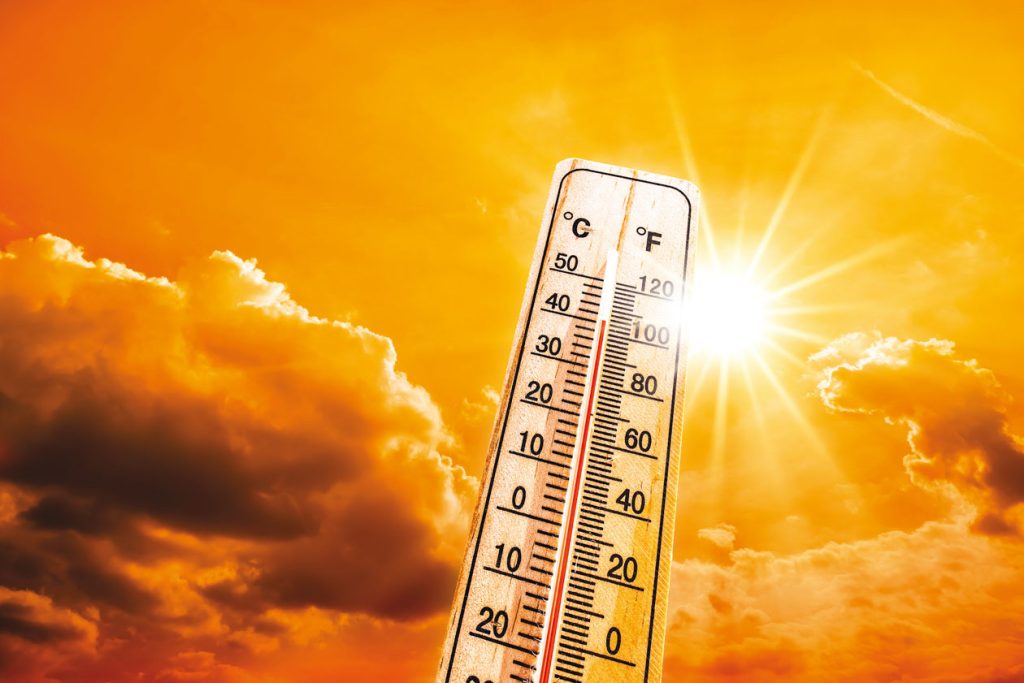In 2023, Europe experienced an unprecedented number of “extreme heat stress” days, according to a joint report by the EU’s Copernicus Climate Change Service and the UN’s World Meteorological Organization (WMO). This record-setting heat was part of a year marked by extreme weather events, including severe heatwaves, catastrophic floods, prolonged droughts, violent storms, and the largest wildfire in Europe’s history.
These disasters resulted in billions of dollars in damages and affected over two million people. The health implications were severe, with heat identified as the most significant climate-related threat, especially as global warming continues to escalate European summers.
Rebecca Emerton, a climate scientist at Copernicus, highlighted the increasing trend in heat stress days across Europe. The study utilized the Universal Thermal Climate Index, which considers factors like temperature, humidity, wind speed, sunshine, and heat emitted by surroundings to measure the impact of environmental conditions on human health.
Extreme heat stress, defined as a ‘feels-like’ temperature exceeding 46 degrees Celsius, poses significant health risks, particularly for vulnerable populations such as the elderly or those with pre-existing health conditions. Urban areas are particularly susceptible to the effects of heat, with 23 of the 30 worst heatwaves in Europe occurring this century and heat-related deaths increasing by around 30% over the past 20 years.
Although 2023 was not Europe’s hottest summer on record, it was still exceptionally hot. A prolonged heatwave persisted from June to September, with September being the warmest on record. On July 23, an unprecedented 13% of Europe experienced high levels of heat stress, with southern Europe being the hardest hit.
While the exact number of deaths from extreme heat in 2023 is not yet available, previous extreme heatwaves in 2003, 2010, and 2022 resulted in tens of thousands of deaths. Alvaro Silva, a climatologist from WMO, emphasized the alarming increase in mortality during extreme heatwaves and the widespread impact across European regions.
The report underscores the urgent need for action on climate change, as greenhouse gas emissions continue to warm the planet, leading to more frequent and intense extreme weather events. Europe is warming at twice the global average rate, and heatwaves are projected to become longer and more severe in the future.
The consequences of these changes, combined with aging populations and increasing urbanization, will have serious implications for public health. The current interventions to mitigate heat-related health risks will soon be inadequate, requiring more comprehensive strategies to protect vulnerable populations.
In addition to extreme heat, 2023 was also marked by record-breaking global temperatures and ocean heat content. Average sea surface temperatures in Europe were the highest on record, with a severe marine heatwave described as “beyond extreme.” Glacial loss was observed across Europe, and Greece experienced the largest wildfire in the history of the EU.
Furthermore, 2023 was one of Europe’s wettest years, with major floods affecting 1.6 million people, and storms impacting an additional 550,000. The economic cost of these extreme events was estimated at 13.4 billion euros ($14.3 billion), with flooding accounting for approximately 80% of the total damages.
Read More: The Fermi Bubbles: Giant Structures at the Center of the Milky Way
